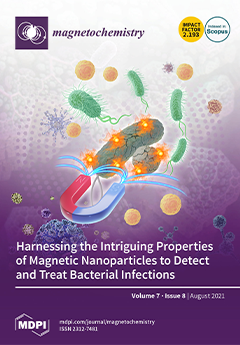Open AccessFeature PaperArticle
Self-Assembly and Magnetic Order of Bi-Molecular 2D Spin Lattices of M(II,III) Phthalocyanines on Au(111)
by
Miloš Baljozović, Xunshan Liu, Olha Popova, Jan Girovsky, Jan Nowakowski, Harald Rossmann, Thomas Nijs, Mina Moradi, S. Fatemeh Mousavi, Nicholas C. Plumb, Milan Radović, Nirmalya Ballav, Jan Dreiser, Silvio Decurtins, Igor A. Pašti, Natalia V. Skorodumova, Shi-Xia Liu and Thomas A. Jung
Cited by 4 | Viewed by 4998
Abstract
Single layer low-dimensional materials are presently of emerging interest, including in the context of magnetism. In the present report, on-surface supramolecular architecturing was further developed and employed to create surface supported two-dimensional binary spin arrays on atomically clean non-magnetic Au(111). By chemical programming
[...] Read more.
Single layer low-dimensional materials are presently of emerging interest, including in the context of magnetism. In the present report, on-surface supramolecular architecturing was further developed and employed to create surface supported two-dimensional binary spin arrays on atomically clean non-magnetic Au(111). By chemical programming of the modules, different checkerboards were produced combining phthalocyanines containing metals of different oxidation and spin states, diamagnetic zinc, and a metal-free ‘spacer’. In an in-depth, spectro-microscopy and theoretical account, we correlate the structure and the magnetic properties of these tunable systems and discuss the emergence of 2D Kondo magnetism from the spin-bearing components and via the physico-chemical bonding to the underlying substrate. The contributions of the individual elements, as well as the role of the electronic surface state in the bottom substrate, are discussed, also looking towards further in-depth investigations.
Full article
►▼
Show Figures





